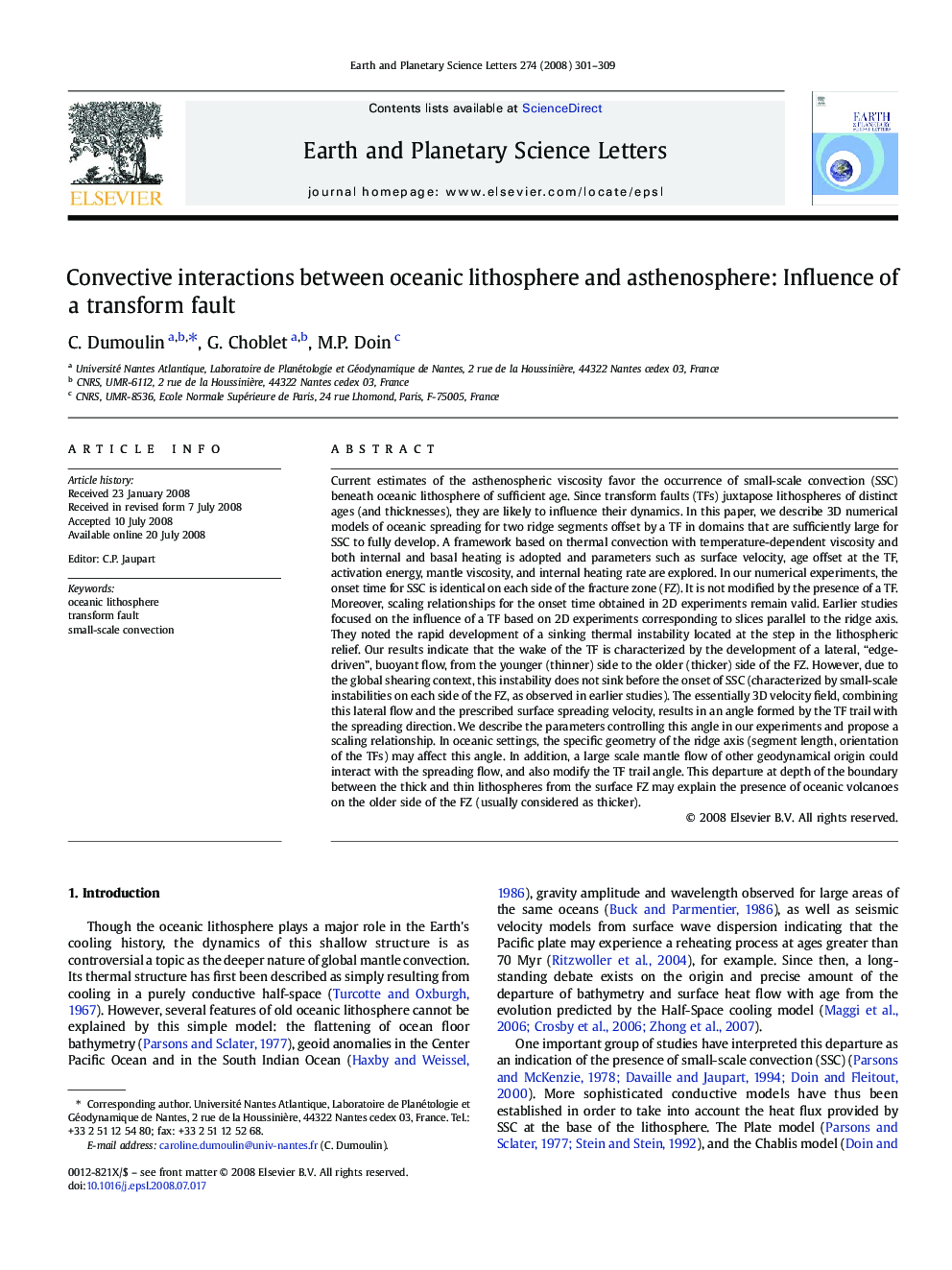| کد مقاله | کد نشریه | سال انتشار | مقاله انگلیسی | نسخه تمام متن |
|---|---|---|---|---|
| 4679557 | 1634887 | 2008 | 9 صفحه PDF | دانلود رایگان |

Current estimates of the asthenospheric viscosity favor the occurrence of small-scale convection (SSC) beneath oceanic lithosphere of sufficient age. Since transform faults (TFs) juxtapose lithospheres of distinct ages (and thicknesses), they are likely to influence their dynamics. In this paper, we describe 3D numerical models of oceanic spreading for two ridge segments offset by a TF in domains that are sufficiently large for SSC to fully develop. A framework based on thermal convection with temperature-dependent viscosity and both internal and basal heating is adopted and parameters such as surface velocity, age offset at the TF, activation energy, mantle viscosity, and internal heating rate are explored. In our numerical experiments, the onset time for SSC is identical on each side of the fracture zone (FZ). It is not modified by the presence of a TF. Moreover, scaling relationships for the onset time obtained in 2D experiments remain valid. Earlier studies focused on the influence of a TF based on 2D experiments corresponding to slices parallel to the ridge axis. They noted the rapid development of a sinking thermal instability located at the step in the lithospheric relief. Our results indicate that the wake of the TF is characterized by the development of a lateral, “edge-driven”, buoyant flow, from the younger (thinner) side to the older (thicker) side of the FZ. However, due to the global shearing context, this instability does not sink before the onset of SSC (characterized by small-scale instabilities on each side of the FZ, as observed in earlier studies). The essentially 3D velocity field, combining this lateral flow and the prescribed surface spreading velocity, results in an angle formed by the TF trail with the spreading direction. We describe the parameters controlling this angle in our experiments and propose a scaling relationship. In oceanic settings, the specific geometry of the ridge axis (segment length, orientation of the TFs) may affect this angle. In addition, a large scale mantle flow of other geodynamical origin could interact with the spreading flow, and also modify the TF trail angle. This departure at depth of the boundary between the thick and thin lithospheres from the surface FZ may explain the presence of oceanic volcanoes on the older side of the FZ (usually considered as thicker).
Journal: Earth and Planetary Science Letters - Volume 274, Issues 3–4, 15 October 2008, Pages 301–309